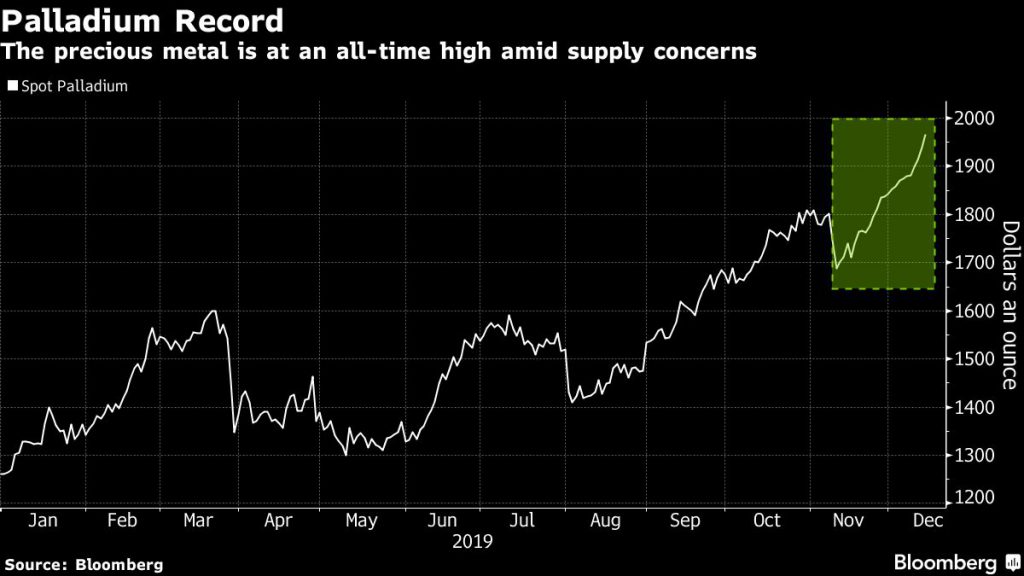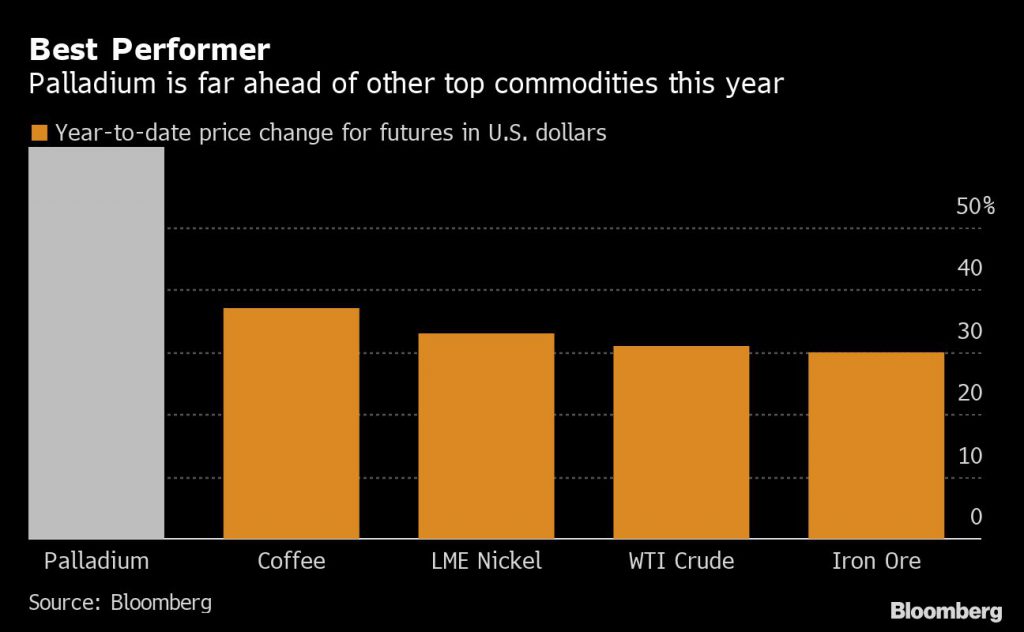
Palladium set its sights on a record $2,000 an ounce, with the metal’s blistering rally showing no sign yet of cooling off.
Prices climbed for an unprecedented 16th day after signs of a breakthrough in the U.S.-China trade talks, fueling hopes for a rebound in the auto industry, palladium’s biggest consumer. The metal that reached another record surged this week as mining disruptions in major producer South Africa threatened to tighten a market already hobbled by a persistent deficit.

“We’re already in uncharted territory,” said Daniel Briesemann, a Commerzbank AG analyst. “The $2,000 mark seems to be a very attractive target to overcome. We also think some speculative financial investors may be pushing the price higher.”
Spot palladium climbed as much as 2.1% to $1,982.01 an ounce, before trading at $1,969 at 10:25 a.m. in New York, according to Bloomberg generic pricing.
The metal has gained more than 50% this year even as global car sales remain weak. Citigroup Inc. forecast prices could hit $2,500 next year.
Tight supplies, which have trailed demand since at least 2012, mean that autocatalyst makers are scrambling to get hold of the metal to meet stricter pollution rules.

“The physiological $2,000 level now acts as such a magnet to the market,” said Ole Hansen, head of commodity strategy at Saxo Bank A/S. “The strong momentum driven by tight fundamentals was given a further jolt on news that a phase-one trade deal has been reached.”
South Africa, the world’s No. 2 palladium producer, expanded rolling blackouts to a record level earlier this week, disrupting miners’ operations. The situation has eased and most operations have returned to normal, although the country continues to experience power cuts.
Still, given the relatively small size of the market, a pullback in palladium prices could be sharp, said ABN Amro Bank NV strategist Georgette Boele.
“What goes exponentially up can eventually also drop like that,” she said. “It will not defy gravity forever.”
Beijing and Washington have agreed on the text of a phase one trade deal, which will see the removal of tariffs on Chinese goods in stages, Vice Commerce Minister Wang Shouwen said. That averts the Dec. 15 introduction of a new wave of U.S. tariffs.
Gold and silver swung between gains and losses, while platinum declined. The metal used in autocatalysts mainly for diesel-fueled vehicles will probably remain in surplus, Morgan Stanley said this week.
The Bloomberg Dollar Spot Index reached the lowest since July.
(By Ranjeetha Pakiam and Elena Mazneva, with assistance from Justina Vasquez)
Comments
Know Future
I’ve read several articles like this during the past week. They all discussed the problems in South Africa, the number 2 palladium producer, but they all neglect to identify the number 1 producer. Would that be Russia, specifically Norlisk (NILSY)? Why not add one extra sentence to your article to identify Norlisk for the convenience of your reading audience?